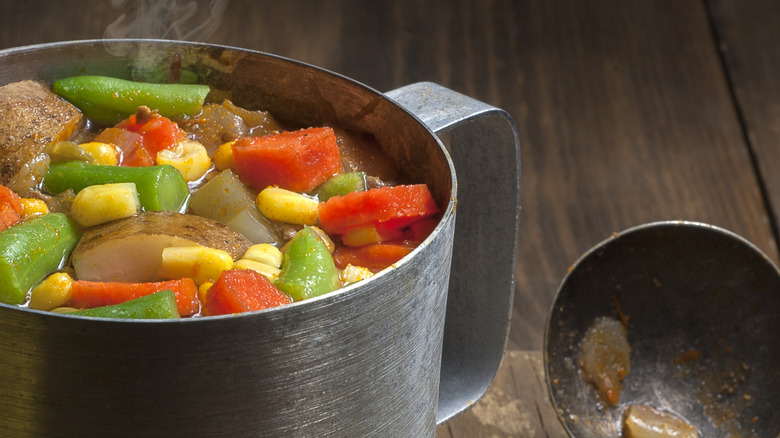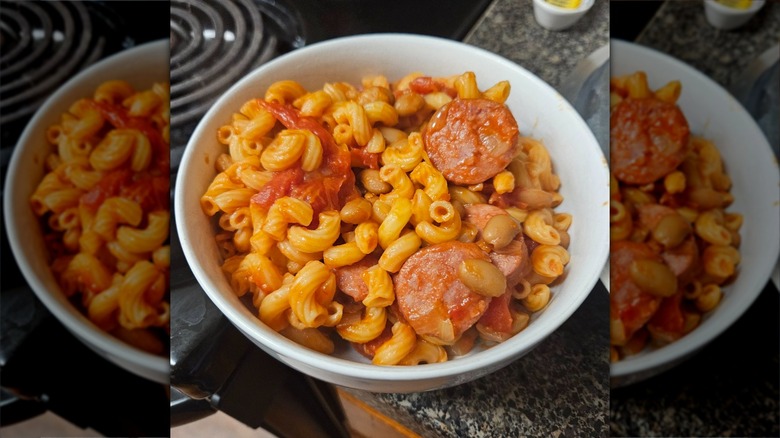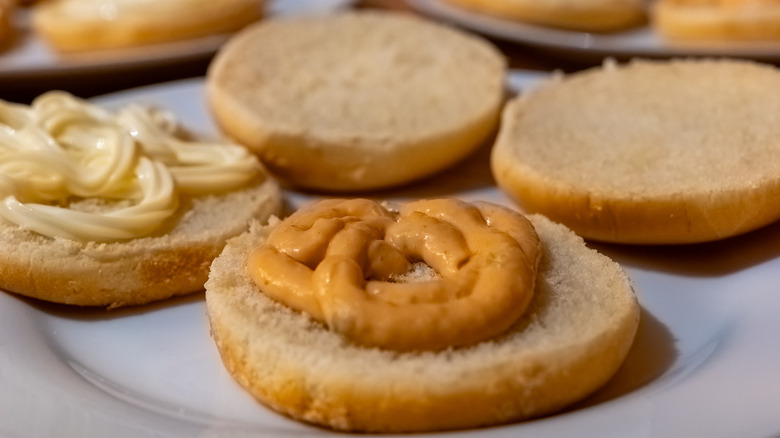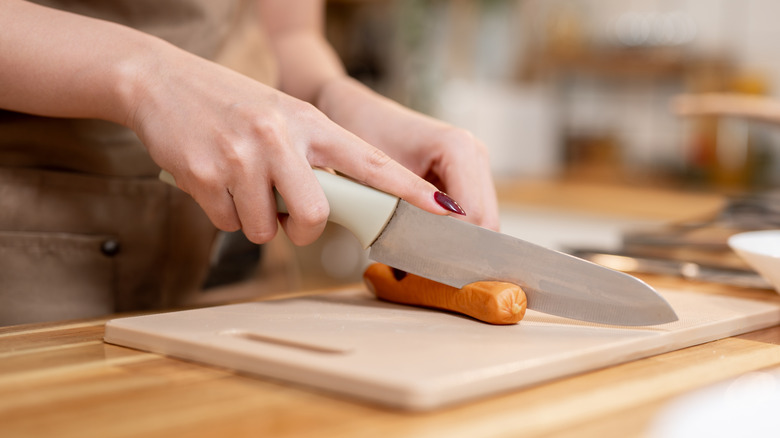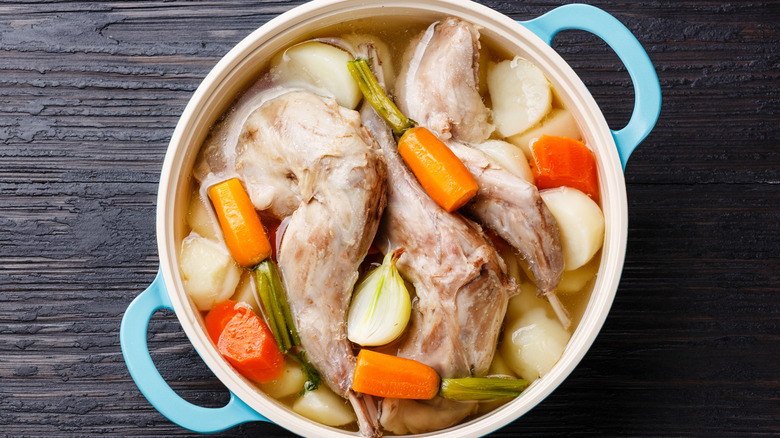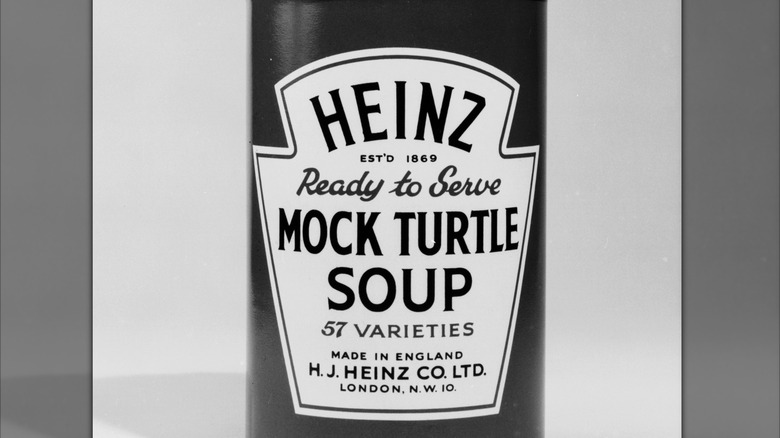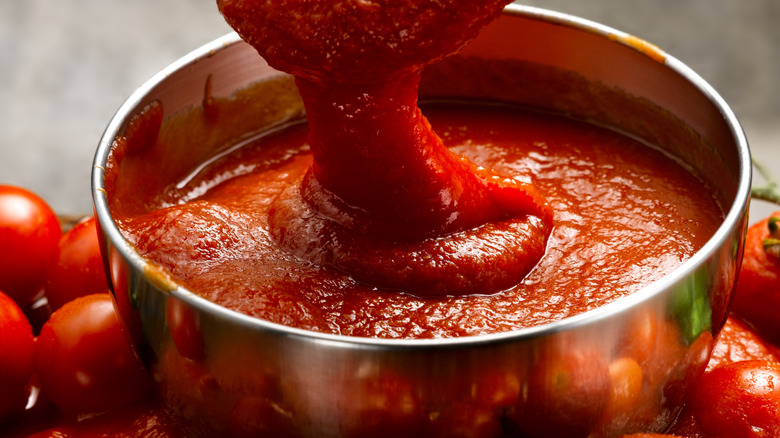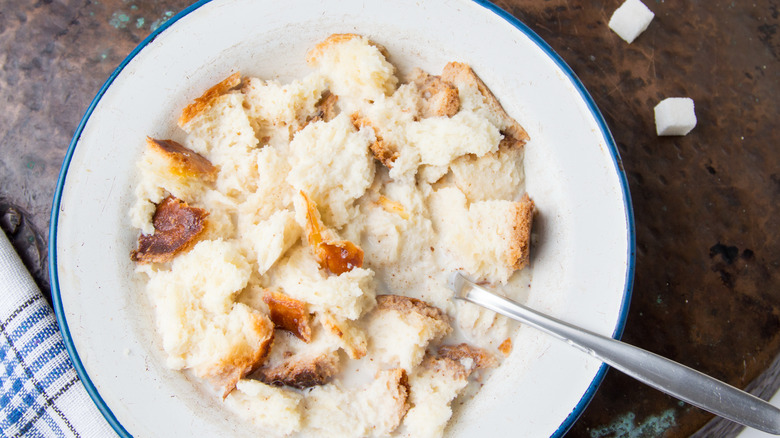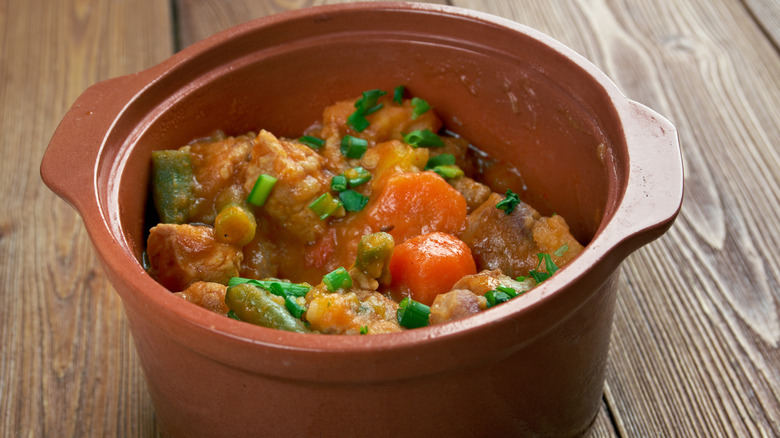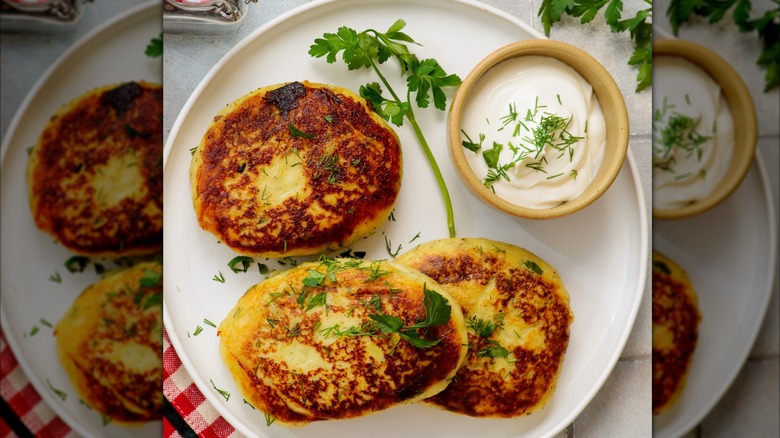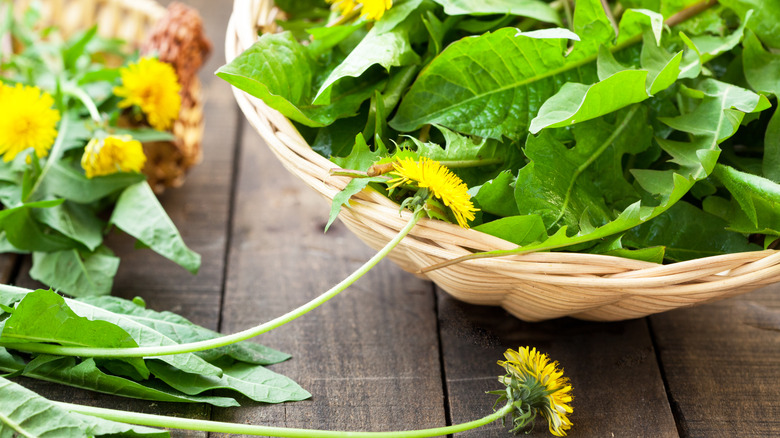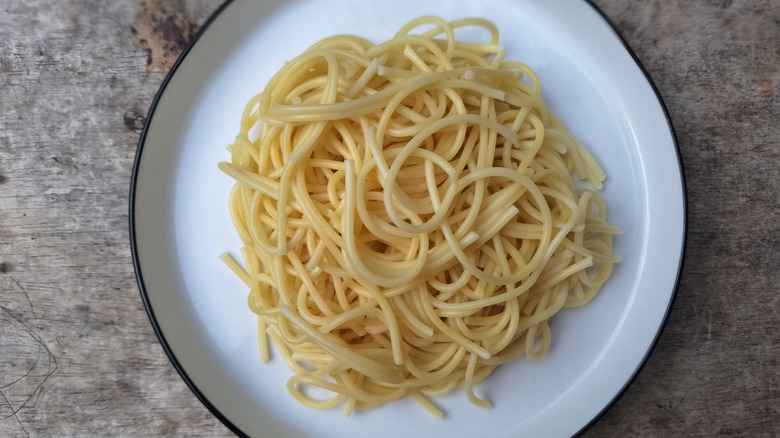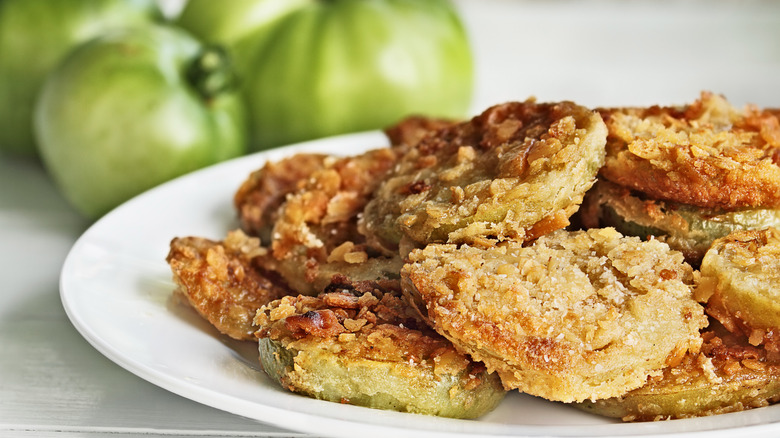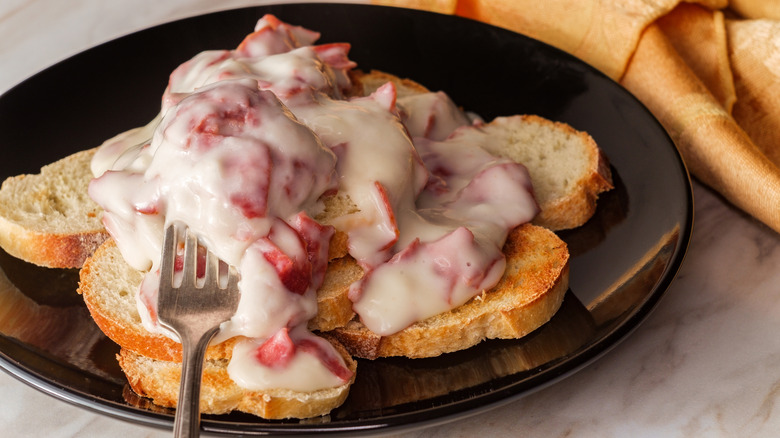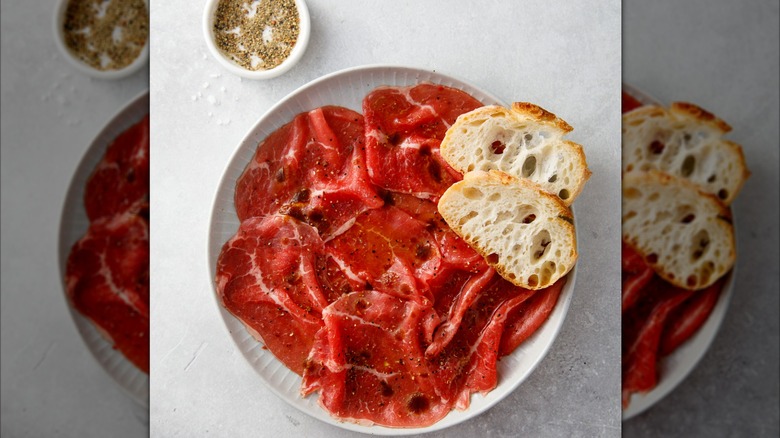Depression Era Dinners We Don't Eat Anymore
It's hard to imagine that the average American family had 40% less money in 1933 compared to 1929. In response to such a steep and sudden decline in income, everyone had to get creative in the kitchen during the Great Depression. From starting gardens to eating unpopular cuts of meat and buying old bread, families worked wonders to survive this awful time in history.
Even though food prices have exploded and salaries haven't been able to keep up in recent years, most people are fortunate enough not to eat the same way that others did during the Great Depression. However, learning about struggles throughout history can help us appreciate the food we have in our kitchens, even when times are tough.
Have you ever wondered if you could stomach any dishes that were popular during the Great Depression? Read on to learn about the creative ways people kept their stomachs full so they'd have enough energy to do manual labor and any odd jobs they could find.
Hoover stew
Americans weren't happy with President Hoover during the Great Depression, and they got back at him in a petty but powerful way. They named a bunch of struggle meals — such as Hoover stew — after their commander-in-chief because they thought he should've done more to prevent that disastrous economic collapse. Americans also named the homeless camps that were constructed during this time Hoovervilles, which, along with soup kitchens, served as much Hoover stew as they could to prevent starvation.
Once you dive into the ingredients of Hoover stew, this Great Depression meal doesn't seem all that bad. While it's simple, everything probably came together in a filling and comforting way. To make Hoover stew, all you need to do is throw together some macaroni, canned tomatoes and other veggies, and processed meat, such as hot dogs, in a pot and boil it.
Some Hoover stew recipes include various combinations of canned corn, green beans, pinto beans, and white beans. The whole point of this stew was to use whatever canned goods you had on hand to bulk up the meal. People could also use ground beef or Kielbasa sausage, but hot dogs were the most common choice. The fascinating history of hot dogs started long before the Great Depression, but this bizarre and delicious meat was a lifesaver during this time because it was so cheap to produce.
Peanut butter and mayonnaise sandwiches
Americans have loved peanut butter sandwiches for generations and have spent decades putting a clever spin on the classic dish. Elvis Presley was known for his obsession with peanut butter sandwiches that included decadent ingredients like bacon and fried bananas, while some people — particularly those with pregnancy cravings — have been known to add the likes of pickles to their sandwich.
The idea of eating a peanut butter and mayonnaise sandwich, as was popular during the Great Depression, might be odd enough to make your stomach turn. Elvis and pregnant people have the right idea by combining interesting textures and flavors, but peanut butter and mayonnaise sound too fatty and smooth together. Maybe if you had enough time to toast your bread, that could bring some much-needed texture to a peanut butter and mayonnaise sandwich. In desperate times, though, eating a calorie bomb like that could be exactly what you need to bring home some money after a long day of laborious work.
The poorman's meal
If you've never watched the YouTube channel Great Depression Cooking with Clara, you're missing out on a fascinating retelling of a dramatic time in American history through food and stories. Clara was in her 90s when her grandson helped her film cooking videos and post them online. Because of their efforts, the channel will always be a special window into the past.
One of her most popular videos is a recipe for what she calls the poorman's meal. In the video, Clara laughs as she peels potatoes and recalls how her whole family was overweight because potatoes were the majority of what they ate. She explains that you must cut around the spoiled parts of a potato and use what's good.
Once she peels her potatoes, she cubes them and puts them in a pan. She cuts an onion directly over the pan with the potatoes. She adds oil, turns on the heat, and starts chopping up some hot dogs while the potatoes and onion cook. She instructs home cooks to eyeball how many hot dogs they want to get their desired ratio. After the potatoes start to brown and the hot dogs are also in the pan, it's time to add a few tablespoons of tomato sauce and a bit of water to soften the potatoes and get some flavor. Clara tastes her potatoes to test for doneness before serving.
Rabbit dumplings
Raising your own farm animals is expensive and time-consuming. This is why lots of people living through the Great Depression turned to eating small, wild animals that are easy to catch.
Not only do rabbits reproduce quickly, but they're also herbivores that can do well in all kinds of environments. Eating rabbits may not be common in America anymore since many people view them as cute pets. However, select other countries around the world still include rabbit meat in their cuisines. There are plenty of great reasons to start eating rabbit if you can set aside your hesitation.
During the Great Depression, rabbit stew topped with dumplings was a nutritious meal. People could break down the rabbits, boil the parts they didn't want to eat to create a rich broth and use the meat in a stew. Since flour was another cheap staple, dumplings were accessible. Canned vegetables were another simple way to add more nutrients and customize the flavor based on individual tastes.
Turtle or tortoise soup
If rabbit meat is off-putting, then turtle and tortoise meat may seem downright outrageous. However, these reptiles were easy targets during the Great Depression because they were slow and contained lots of meat. Consider the fact that several species of turtles and tortoises can weigh well over 50 pounds. Catching one would be enough to feed a small community. These folks couldn't afford regular chickens, so "Hoover chicken" was the next best thing (via Slate).
While some people may be interested in trying a taste of history by making turtle or tortoise soup or stew, you should abstain from hunting wild reptiles because you could end up with a hefty fine or jail time. Americans ate so many turtles and tortoises during the Great Depression that many states have passed laws to protect local reptile populations. If you're desperate, you might be able to find a restaurant in your state that serves this rare dish. The major difference is that these restaurants source their meat from farms rather than disturbing wild populations.
Tomato gravy poured over a carb
Tomatoes are all over the place when you're studying Great Depression recipes. Almost anyone could grow them, and Americans had endless access to canned varieties. While tomatoes make beautiful sauces and soups, you might be surprised to hear that many people made a basic gravy and poured that over a hearty carb for their whole meal.
Southerners swear by making their tomato gravy with a bacon grease roux, but any type of oil will work. Afterward, you can dump a bunch of fresh or canned tomatoes in and cook things down into a beautiful gravy. Salt, pepper, and maybe even a pinch of sugar will create some depth. Some people added a splash of cream or milk right before eating to loosen things up.
The magic of this gravy is that it goes well with any type of carb, whether that's rice, grits, biscuits, or potatoes. If those during the Depression were fortunate enough to have meat one night, they poured it over that, too. If you love the classic tomato soup and grilled cheese combo, tomato gravy might be a dish worth trying.
Cooked bread
Nowadays, people have come up with plenty of creative and delicious ways to use leftover bread. If you lived through the Great Depression, though, having stale bread in the house was a tougher challenge to overcome. The best trick they had to revive old bread was covering it with hot water, mashing it up, and eating it with a spoon. There was no such glorious thing as French toast or herbaceous croutons.
In a YouTube video by Great Depression Cooking with Clara, Clara explains that this dish was reserved for bread that was too hard to use for any other recipe. After she slices her portion and puts it in a bowl, she boils some water, pours it over the slice, and starts mashing it to ensure that the water can penetrate deeper parts and soften everything. Clara adds olive oil and salt to make the cooked bread more palatable. While this seems like a daunting meal to eat, Clara optimistically states that it's a wonderful option for kids who might be picky and older people who don't have their teeth.
Mulligan hobo stew
During the Great Depression, the term "hobo" was used to describe those who traveled across the country by train to find work. Hoboes were a huge part of American history, performing all kinds of important jobs and even forming their own cultural hallmarks. Hoboes made mulligan stew long before the Great Depression, but as more people became homeless during this time period, the dish took off.
An interesting thing happened in the culture. Old-school hoboes were protective of their mulligan stew recipe and even complained to newspapers about newcomers adding non-traditional ingredients like carrots to their stews. Their outrage seems more justified once you learn that the wealthy also took this dish and ran with it. The media and upper class glamorized the dish and held extravagant dinner parties rather than helping the folks who created it. To add salt to the wound, they even held costume contests that awarded people who could find the best clothes to cosplay being poor.
If you want to taste a traditional mulligan stew that pays homage to the hard-working hoboes, you'll have to combine a can of corned beef, a diced onion, a can of peas, a medium bottle of ketchup, and salt and pepper. You really need to love the flavor of ketchup to appreciate this stew. Even if the dish tastes a bit odd, it's an important piece of American history.
Meat and potato patties
Figuring out how to stretch your ingredients further is a brilliant skill that can help lower your grocery bills. When meat was scarce during the Great Depression, people made meat and potato patties to get a taste of decadent meat while feeling full from the potatoes.
These patties contain equal parts ground beef and shredded potatoes. Diced onion and bell pepper are also added to the mix to keep the patties moist and enhance the flavor. After browning both sides of the patties in a pan, add a cup of tomato juice and cover with a lid until the meat reaches a safe internal temperature.
The next step is to remove the patties and grab some flour. Combine a tablespoon of flour and ¼ cup of water to create a slurry. Pour this into the pan with the tomato sauce and, once everything thickens, pour the mixture over the patties for a simple but satisfying meal.
Dandelion salad
Considering how easy it is to pick up fruits and vegetables at your local grocery store, it's no surprise that foraging isn't as common today as it was during the Great Depression and throughout centuries of human history. There weren't any particular rules about salad fixings and dressings during the Great Depression. People added whatever vegetables they could forage or grow in their gardens. For example, one Great Depression dish made with foraged ingredients is the humble dandelion salad.
The bulk of this salad comes from the dandelion greens, but the flowers are edible, too. People who've eaten them before say that they taste similar to honey. If you don't use pesticides on your lawn and feel comfortable welcoming this delicious weed into your greenery, you can make this dish with ease. Local farmers' markets or smaller grocery stores may have dandelion greens as well, so it's worth doing some exploring.
Spaghetti with boiled carrots and white sauce
You may not be allowed to add carrots to traditional mulligan stew, but carrots were a popular staple in pasta dishes during the Great Depression. They added lots of bulk and vitamins without costing a fortune. Boxed pasta, milk, flour, butter, and carrots are all you need to recreate the taste of the 1930s.
To make this meal, dice up some carrots while bringing a pot of water to a boil, then dump your boxed spaghetti and sliced carrots. In a saucepan, make a roux with butter and flour, and pour some milk. If you don't want your sauce to be weirdly sweet, make sure you add salt and keep adjusting to your taste. You can't add Parmesan or any other saving grace to the sauce. The real kicker, though, is that some traditional recipes from the Great Depression call for boiling the spaghetti for 25 minutes, which is arguably one of the worst mistakes people make when cooking pasta.
Tomato cakes
Tomatoes are making another appearance on the Great Depression dinner menu. People who had lots of canned tomatoes lying around sometimes whipped up a dish called tomato cakes.
To recreate this dish, chop a quarter of an onion and crush an entire sleeve of saltine crackers. Dump your onion, saltine crackers, a can of peeled and diced tomatoes, and a sprinkle of salt and pepper in a bowl. Let the juice from the tomatoes soften the crackers and bring all of the ingredients together for around 15 minutes.
Now, it's time to heat up a few tablespoons of olive oil in a frying pan. Your tomato, onion, and saltine cracker mixture should be thick enough to form patties. Fry the patties on both sides until they're golden. As basic as these tomato cakes are, the salty crackers combined with the juicy tomatoes and refreshing onion would probably taste divine in the '30s.
Scalloped eggs with rice
Surfing the internet for old-fashioned recipes can uncover some exciting gems that might've otherwise been lost to time. One Reddit user shared photos from their cookbook called "The Household Searchlight Recipe Book," which is from the Depression era. They explained that the book contains all kinds of wacky recipes, such as squirrel stew and cantaloupe sundaes. One fascinating recipe for scalloped eggs with rice doesn't seem too wild compared to our modern diet.
According to the book, you'll need to hard-boil six eggs and prepare a white sauce, which likely refers to the popular roux and milk mixture that's featured in other Great Depression dishes. Cook 2 cups of rice, then combine it with your white sauce and ½ cup of grated cheese. Grease a baking dish and create your first layer with half of the rice, cheese, and white sauce mixture. Press it down, then slice your hard-boiled eggs in half and layer them on top. Salt and pepper your eggs before covering them with the remaining half of your rice, cheese, and white sauce. Sprinkle ¼ cup of shredded cheese on top before baking.
Creamed chipped beef
Chipped beef is similar to beef jerky simply because it also relies on drying and curing the meat to preserve it for a longer period of time. Believe it or not, creamed chipped beef has roots all the way back in Great Britain during the 1700s because it was a quick, filling meal that could satisfy men at sea.
To cook creamed chipped beef, you will once again need a reliable white sauce. You can add fried onions and peas to the white sauce and chipped beef to make the dish even more wholesome. Pour the creamed chipped beef over toast, potatoes, rice, or any other carb that you have on hand.
Even though this recipe is hundreds of years old, it always cycled in and out of popularity when times were tough. People could count on creamed chip beef to boost their morale, whether they were out at sea, enduring wartime, or going through an economic crisis.
The poorman's feast
Great Depression Cooking with Clara also has a video teaching folks how to create the poorman's feast. The dish may not seem grand to modern viewers, but Clara explains that this was a rare treat that lifted everyone's spirits.
She boils an entire bag of lentils, then adds a cup of rice and lets that cook as well. While she waits, she prepares her meat. She takes out a plate, pours olive oil, squeezes an entire lemon, and sprinkles some pepper. She places her cuts of beef — which are sliced paper-thin, as was the norm in the 1930s — and gets her marinade all over the meat. Next, she splashes some more olive oil in a pan and starts cooking her beef, then lets the cooked meat continue to soak in the marinade while she prepares her salad.
Clara's salad is simple but refreshing. It includes chopped endives, olive oil, lemon juice, salt, and pepper. She mixes everything by hand to ensure each leaf is coated. She slices some bread, and then she's finally ready to plate the feast.
